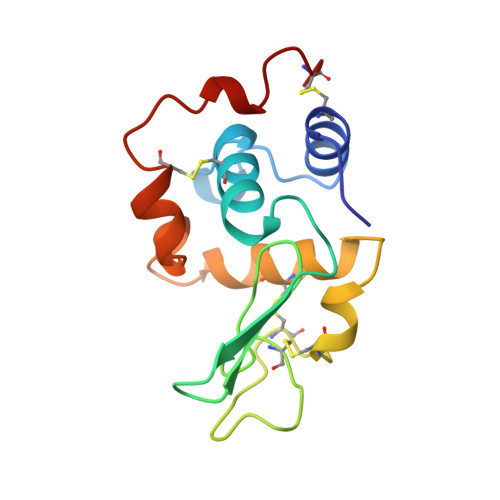Contribution of amino acid substitutions at two different interior positions to the conformational stability of human lysozyme
Funahashi, J., Takano, K., Yamagata, Y., Yutani, K.(1999) Protein Eng 12: 841-850
- PubMed: 10556244
- DOI: https://doi.org/10.1093/protein/12.10.841
- Primary Citation of Related Structures:
2MEA, 2MEB, 2MEC, 2MED, 2MEE, 2MEF, 2MEG, 2MEH, 2MEI - PubMed Abstract:
To elucidate correlative relationships between structural change and thermodynamic stability in proteins, a series of mutant human lysozymes modified at two buried positions (Ile56 and Ile59) were examined. Their thermodynamic parameters of denaturation and crystal structures were studied by calorimetry and X-ray crystallography. The mutants at positions 56 and 59 exhibited different responses to a series of amino acid substitutions. The changes in stability due to substitutions showed a linear correlation with changes in hydrophobicity of substituted residues, having different slopes at each mutation site. However, the stability of each mutant was found to be represented by a unique equation involving physical properties calculated from mutant structures. By fitting present and previous stability data for mutant human lysozymes substituted at various positions to the equation, the magnitudes of the hydrophobicity of a carbon atom and the hydrophobicity of nitrogen and neutral oxygen atoms were found to be 0.178 and -0.013 kJ/mol.A(2), respectively. It was also found that the contribution of a hydrogen bond with a length of 3.0 A to protein stability was 5.1 kJ/mol and the entropy loss of newly introduction of a water molecules was 7.8 kJ/mol.
Organizational Affiliation:
Institute for Protein Research, Osaka University, Yamadaoka, Suita, Osaka 565-0871, Japan.















